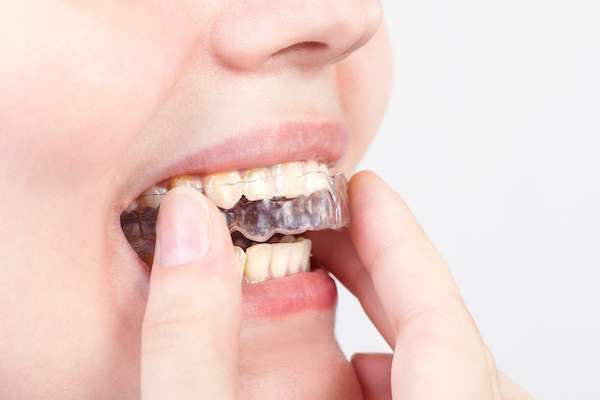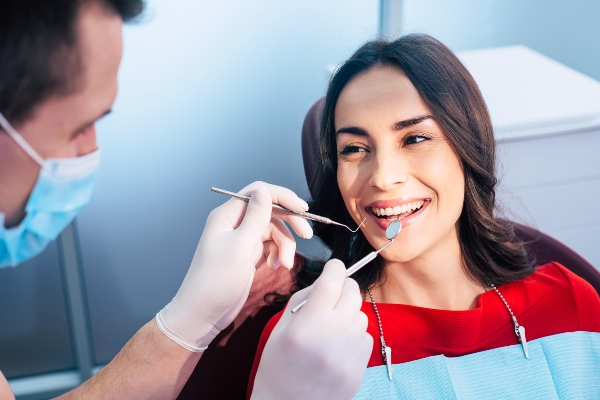 While researching options for teeth straightening, many patients consider the use of clear braces instead of traditional metal braces. There are pros and cons to each option. Before making a decision, learning more about the differences between clear braces options and traditional teeth straightening can help patients decide which route works for their circumstances.
While researching options for teeth straightening, many patients consider the use of clear braces instead of traditional metal braces. There are pros and cons to each option. Before making a decision, learning more about the differences between clear braces options and traditional teeth straightening can help patients decide which route works for their circumstances.
5 questions about clear braces answered
Traditional metal braces are not the only option for teeth straightening for most individuals. Getting clear braces is an option that provides more discretion and is especially popular with teenagers and adults for this reason. Getting the answers to some of the most frequently asked questions can help expedite the decision-making process.
1. What are the different types of clear braces?
Clear braces come in a few different forms. Some are attached and adjusted the same way as traditional braces but are constructed with clear or tooth-colored materials to blend in better with the natural teeth. Other types of clear braces are removable tray systems that are virtually invisible while being worn.
2. What are the benefits of clear braces?
The primary benefit of clear braces over metal braces is a higher level of discretion. Ceramic braces are adjusted and tightened in the same way as traditional braces but are less noticeable, especially from a distance. Tray systems or invisible braces offer further advantages. The plastic aligners are removable while eating or for special events such as a photography session. During everyday wear, they are difficult to spot and nearly invisible from a distance.
3. What are the limitations of wearing clear braces?
Ceramic braces are strong and can withstand the tension required to move the teeth into position but are not quite as strong as metal braces. Clear options can crack or chip, so some dentists recommend metal braces for those who play contact sports or are at risk of being hit in the mouth. Tray systems also have some limitations on what they can effectively treat. Some patients are not good candidates for a tray system due to the type of alignment issue.
4. How are clear braces maintained?
Braces that are tooth-colored or clear have the potential to get stained, so when wearing them it is important to avoid staining foods and beverages. Oral hygiene is important for all types of braces, and clear ones are no exception. Tray systems need to be removed when eating and the teeth must be cleaned before replacing the tray.
5. Why doesn’t everyone get clear braces instead of metal ones?
Metal braces may still be recommended for patients who need major adjustments because metal brackets can apply the most amount of force. Younger patients who may be rough on the braces may also do better with the traditional version. Other considerations include time and budgetary constraints.
Check out what others are saying about our dental services on Yelp: Clear Braces in Kennewick, WA.
Conclusion
Getting braces involves a commitment, so it is important for patients to consider all options before moving forward. Those considering clear braces can learn more about the different options by consulting with a dentist to get the answers to further questions.
Request an appointment or call Gledhill Dental at 509-800-8410 for an appointment in our Kennewick office.
Related Posts
Clear braces and other orthodontic advances make teeth straightening treatment more attractive to many patients. From clear aligners to ceramic braces, these innovative treatments allow patients to align their smiles without noticeable metal brackets and wires. Thanks to these alternatives, teeth straightening has become more accessible to those who want to avoid traditional metal braces.Traditional…
Clear braces are a popular and effective teeth straightening option for individuals seeking orthodontic treatment without the visible brackets and wires of traditional braces. These braces are known for their discreet design and effective results. Do you have questions about this service? Below are some of the most frequently asked questions about clear braces treatment.Clear…
Clear braces align the smile more discreetly than other methods, such as traditional metal braces. Patients must practice consistent oral hygiene and maintain good oral health to maximize this alignment solution's aesthetic and functional benefits. Fortunately, a general dentist can help patients in both these regards, allowing them to stay on track with their orthodontic…


